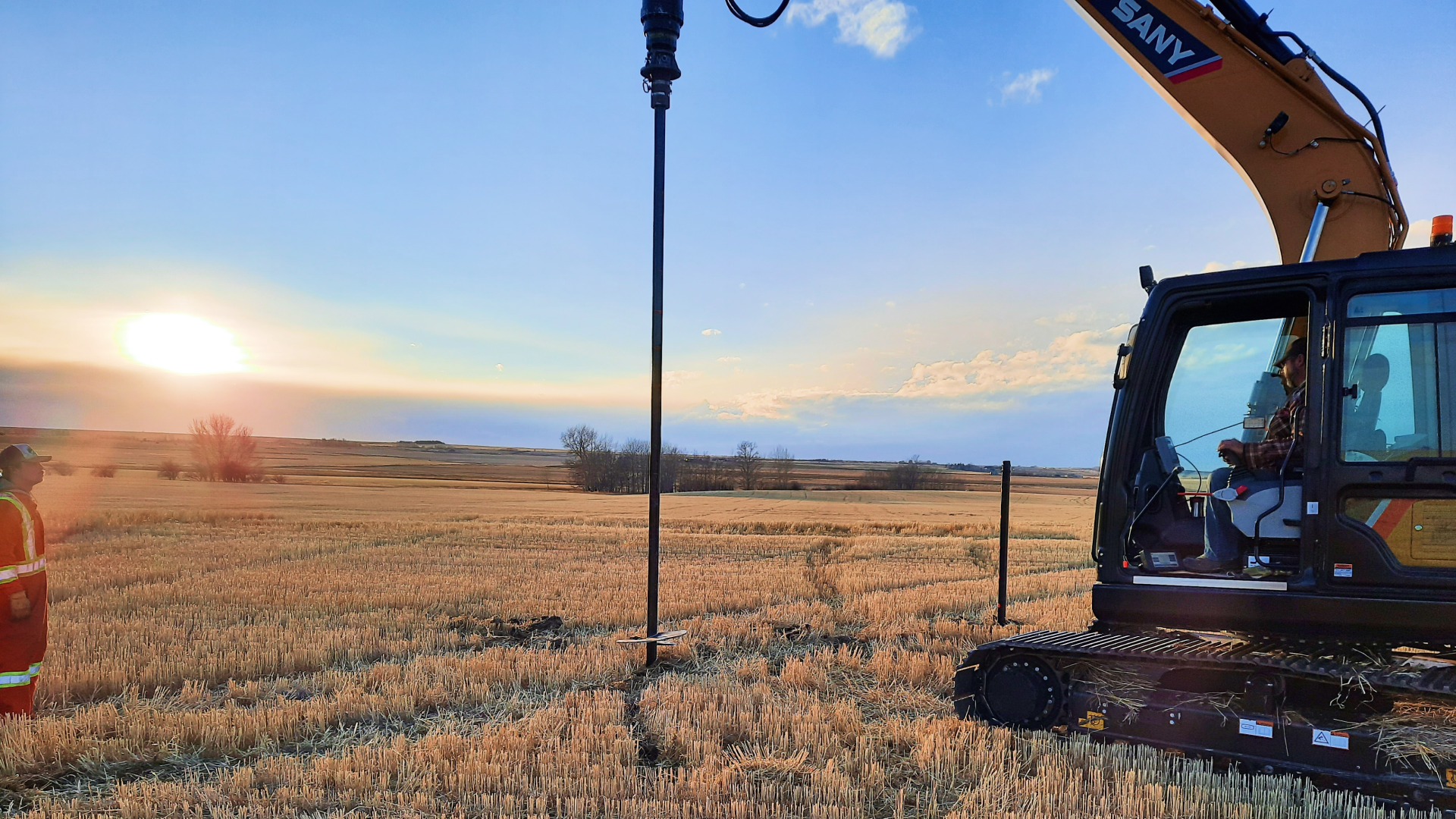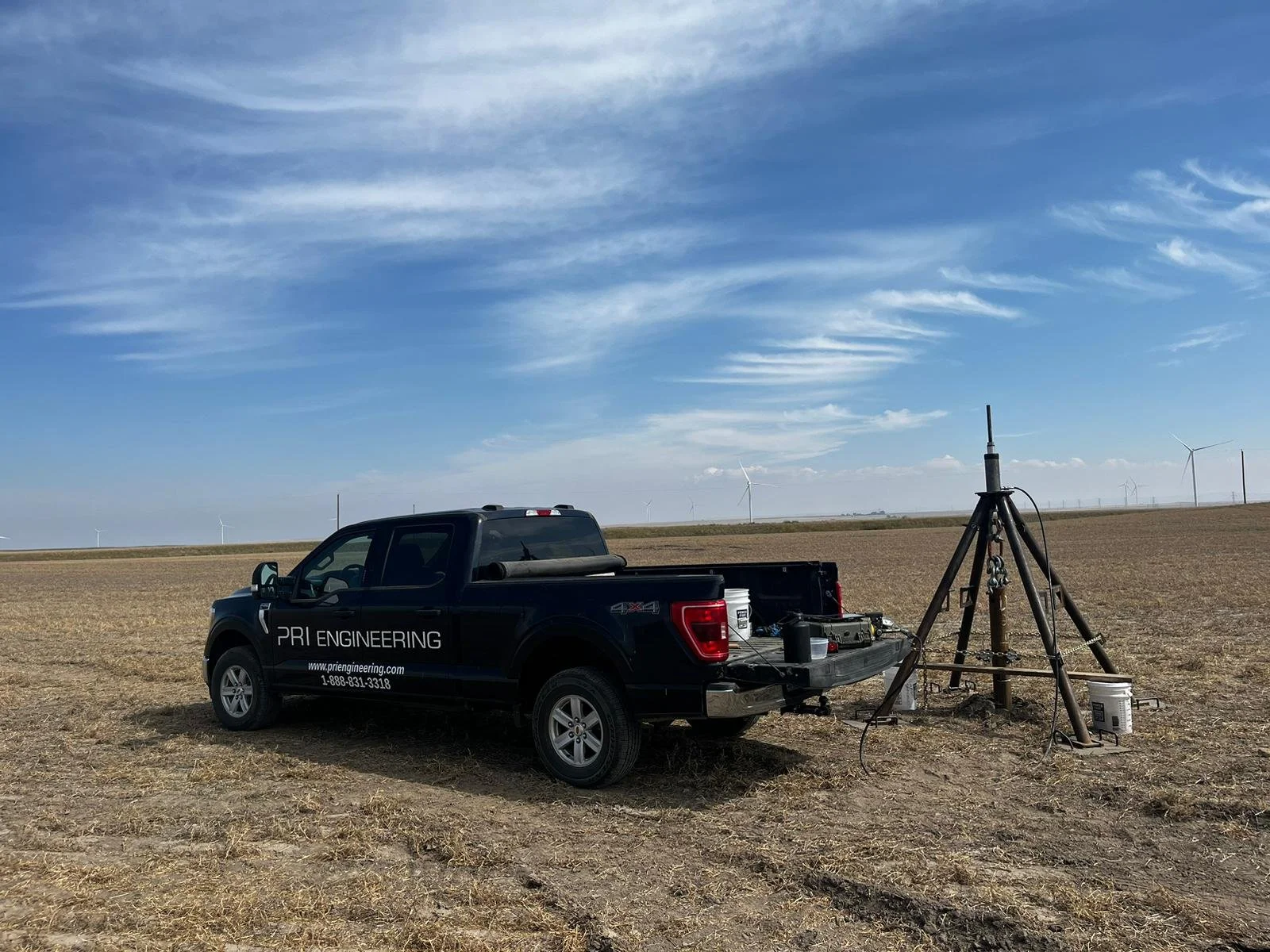What is Geotechnical Engineering?
Earthworks are a crucial part of civil engineering that focuses on investigating what’s going on beneath the surface of the ground. Whether you're planning to build a skyscraper, a bridge, or even a small home, understanding the soil, rock, and groundwater conditions is essential to any successful project. That’s where geotechnical engineering come in—it is the study of how these underground materials will react to the development planned above them.
By conducting a series of tests—both on-site (called in-situ tests) investigated in boreholes or test pits and in the lab on collected samples from these investigations —geotechnical engineers gather valuable data. This data helps them determine if the ground is stable enough to support the proposed development projects. From this, they write a geotechnical investigation report that structural and civil engineers then use to design safe and long-lasting foundations and structures.
The goal of geotechnical engineering is to identify any potential issues below the surface, such as weak soils, deleterious material or high-water tables, and find solutions before construction starts. This preventive approach ensures that the building or infrastructure project won't face problems like foundation settlement or structural damage down the road or costly change orders during construction.
Types of Geotechnical Engineering
Geotechnical engineering covers several specialties, each focused on different aspects of the ground and its properties. Here are some of the key types:
Soil Mechanics: This deals with the behaviour and characteristics of soil, particularly its strength and stability.
Rock Mechanics: Similar to soil mechanics but focuses on rock formations and how they can support structures.
Hydrogeological Engineering: The design of dewatering systems to ensure foundation construction is completed in an acceptable manner.
Foundation Engineering: The design and construction of foundations, ensuring they can safely support the structure above them.
Why is Geotechnical Engineering Important?
You might be wondering why geotechnical engineering is so critical for construction projects. The truth is, the stability and safety of any structure depend largely on what’s underneath it. Here’s why it’s important:
Safety and Stability: Without proper geotechnical investigation, a building or structure could be placed on unstable ground, leading to failure.
Prevention of Future Problems: Issues like geotechnical settlement, where the ground shifts or sinks over time, can cause significant structural damage. Identifying these risks during the design phase can save time and money in the long run.
Environmental Impact: Geotechnical engineers also look at how construction will affect the environment. For instance, they assess if the project might lead to soil erosion or contamination of groundwater.
Geotechnical Survey: The First Step in Any Project
Before any construction begins, a geotechnical survey is conducted. This survey involves a series of tests and investigations that help determine the subsurface conditions of the site. The goal is to collect data on soil composition, groundwater levels, and other critical factors that could affect the structure's design and stability.
During the survey, geotechnical engineers may conduct several in-situ tests (tests done right on the site) to evaluate the soil’s characteristics. They’ll also take soil samples back to the lab for further analysis.
Common Geotechnical Testing Methods
There are several tests that geotechnical engineers use to assess subsurface conditions. Some of the most commonly used include:
Standard Penetration Test (SPT): This test measures the resistance of soil to penetration. Essentially, a sample tube is driven into the ground, and the number of blows needed to drive it a set distance is recorded. This provides an estimate of soil density, shear strength and other soil parameters while allowing for a soil sample to be also collected.
Cone Penetration Test (CPT): In this test, a cone-shaped instrument is pushed into the ground to measure resistance. It’s great for determining soil stratigraphy (the different layers of soil) including groundwater conditions, the soil’s bearing capacity, friction values and seismic soil parameters.
Borehole Drilling: Engineers drill boreholes and collect soil or rock samples. These samples are then sent to the lab for further testing, providing detailed information on the material’s properties.
Geotechnical Investigation Reports
Once all the testing is complete, the data from these tests are compiled into a geotechnical engineering report. This report is an essential document that other engineers, particularly structural and civil engineers, use to design the foundation and other structural elements.
The report will include information on soil types, water levels, and recommendations for foundation design based on the findings. It might also suggest solutions for any potential problems, such as stabilizing weak soils or addressing groundwater issues.
Applications of Geotechnical Engineering
Geotechnical engineering has a wide range of applications across many industries. Some common areas where geotechnical expertise is crucial include:
Construction Projects: Geotechnical engineers ensure that buildings of all sizes are constructed on stable ground, whether it's a residential home or a massive skyscraper.
Roadways and Highways: Proper geotechnical investigation ensures that roads don’t sink or shift over time, reducing the need for expensive repairs.
Tunnels and Underground Structures: Whether for subways or linear infrastructure such as sewage systems, geotechnical studies help ensure the safety of underground projects.
Dams and Levees: These large-scale projects require in-depth geotechnical analysis to ensure they can hold back water safely and avoid catastrophic failures.
Identifying Problematic Areas
One of the key roles of geotechnical engineering is to identify problematic areas in the ground before construction begins. These could be:
Weak or Compressible Soils: Some soils, like soft clay, may not have the strength to support a heavy structure.
High Groundwater Levels: Waterlogged soil can reduce stability and increase the risk of flooding or overall stability.
Voids or Cavities: Natural or man-made voids in the ground can lead to subsidence (the ground collapsing or sinking).
Geotechnical engineers will recommend solutions to these problems, such as reinforcing the soil, redirecting groundwater, or proposing alternate foundation orientations to adequately transfer loads to a more stable soil stratigraphy.
In-Situ Testing: The Key to On-Site Data
In-situ testing allows geotechnical engineers to measure the soil’s characteristics directly on-site. This is crucial because conditions can vary significantly across a construction site. By conducting tests like the Standard Penetration Test (SPT) or Cone Penetration Test (CPT) on-site, engineers collect data on to allow them to determine how the soil will behave under loads.
Lab Testing: Ensuring Accurate Data
Once samples are collected during the geotechnical survey, they’re taken to the lab for detailed analysis. In the lab, engineers can measure things like soil moisture content, grain size distribution, and shear strength to name a few. These lab results complement the on-site tests, giving a full picture of the soil’s properties to support foundation design.
Conclusion
Geotechnical engineering is the backbone of any successful construction project. By understanding the subsurface conditions, geotechnical engineers help ensure that buildings, roads, tunnels, and dams are built on a stable foundation. This proactive approach not only saves time and money but also helps prevent major structural issues in the future.




